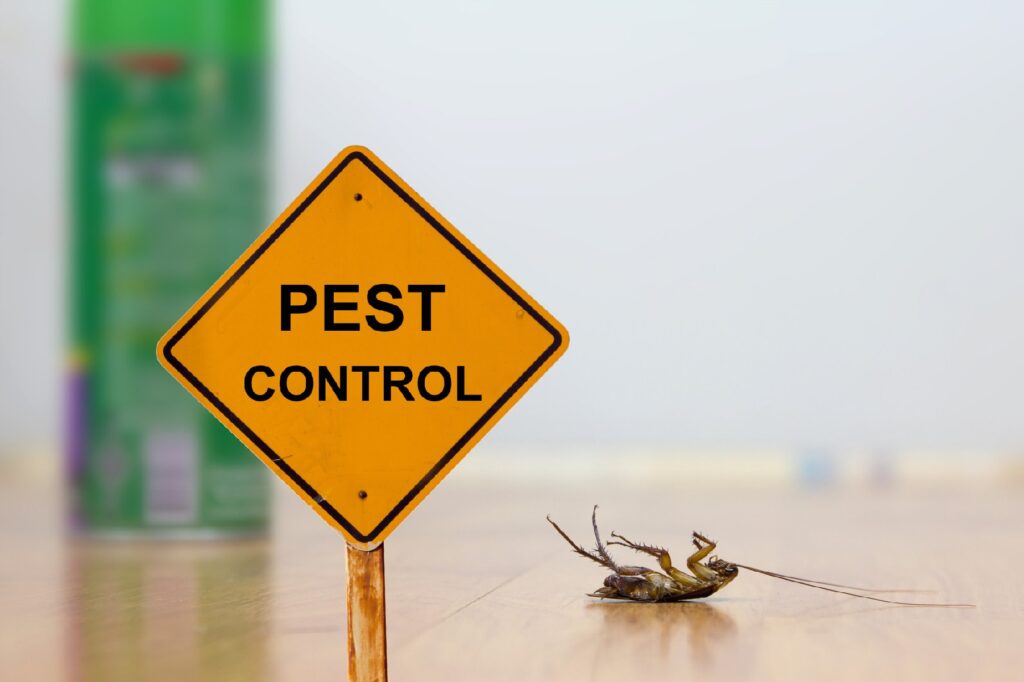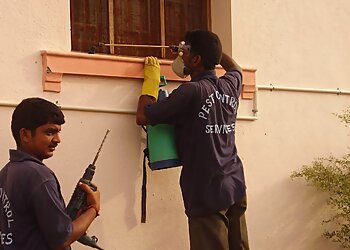Chicago Bug Infestation Removal: Rapid and Efficient Pest Extermination
Chicago Bug Infestation Removal: Rapid and Efficient Pest Extermination
Blog Article
A Comprehensive Overview to the Different Types of Parasite Control Techniques
With the myriad of parasite control approaches offered, it can be frustrating to locate the most effective solution for a particular bug trouble. In this comprehensive guide, we will explore these different types of insect control methods, providing insights into their applications and benefits. By the end, you will certainly have a more clear understanding of which technique may be the best fit for your parasite control needs.
Chemical Pest Control Approaches

One typical kind of chemical pest control is insecticides. Insecticides target particular parasites, such as insects, termites, or ants, and can be utilized both inside your home and outdoors.
An additional type of chemical parasite control is rodenticides. These are chemical compounds designed to regulate populaces of rats, such as rats and mice.
Weed killers, likewise known as herbicides, are another kind of chemical pest control approach. Herbicides are made to selectively kill undesirable plants, referred to as weeds, without causing harm to preferable plants. They are frequently utilized in agriculture, landscape design, and gardening to control the growth of unwanted greenery.
While chemical pest control approaches can be extremely effective in removing insects, it is very important to utilize them deliberately and follow safety and security standards. Overuse or misuse of chemical pesticides can have negative influence on human health and the setting. For that reason, it is essential to use these techniques properly and take into consideration alternate pest control techniques whenever possible.
Organic Pest Control Methods
Organic pest control methods include making use of living microorganisms or natural substances to handle and control pest populations. Unlike chemical techniques, which usually depend on synthetic pesticides, organic control approaches utilize the natural opponents of insects to regulate their populations. This approach is taken into consideration even more eco pleasant and lasting, as it lowers the use of dangerous chemicals and lessens the risk of pesticide resistance.
One extensively used organic pest control method is the introduction of all-natural predators or parasites. For instance, ladybugs are presented to regulate aphids, while particular wasp species are launched to target caterpillars. These predators and parasites feed on parasites, reducing their numbers and protecting against infestations.
One more organic control approach is the usage of microorganisms. Particular bacteria, infections, and fungis can be utilized to contaminate and eliminate specific insects. As an example, the bacterium Bacillus thuringiensis is frequently made use of to control caterpillars, as it produces contaminants that are deadly to these bugs.
Organic control techniques can likewise entail the use of scents or natural materials that disrupt the breeding patterns of pests. By hindering their reproduction, these methods help to reduce pest populations over time.
While organic parasite control techniques are generally effective, they might need longer durations to attain wanted results contrasted to chemical approaches. Furthermore, mindful consideration has to be offered to the selection and release of natural adversaries to avoid unintended damage to valuable microorganisms or environments.
Physical Pest Control Techniques
To effectively handle and manage pest populations, different insect control techniques referred to as physical pest control approaches are used. These techniques involve the use of physical barriers, catches, or tools to avoid parasites from accessing or damaging building. One typical physical bug control approach is using displays or webs to keep bugs out of buildings or gardens. These screens are commonly constructed from fine mesh product that enables air flow while preventing insects from getting in. Another physical bug control approach is the installation of fences or wall surfaces to maintain bigger pests, such as deer or rabbits, out of gardens or farming areas. These barriers physically block the pests' access to the area, reducing the possibility for damages. Additionally, traps and devices can be used to catch or push back parasites. As an example, sticky catches can be put in areas where bugs are an issue, and the insects become stuck to the glue surface area. Ultrasonic gadgets can additionally be utilized to produce high-frequency sounds that are undesirable to parasites, triggering them to leave the area. Physical insect control methods are an eco-friendly choice to chemical pesticides, as they do not rely upon the use of harmful chemicals. pest elimination services
Natural Insect Control Approaches
All-natural pest control approaches provide a sustainable and eco-friendly technique to handling and getting rid of parasites. These approaches focus on the use of natural compounds and organic agents, minimizing the requirement for chemical pesticides that can hurt the environment and human health and wellness. Among the most usual natural insect control approaches is organic control. This involves introducing all-natural predators or parasites to prey on or parasitize the insects. For instance, ladybugs are often introduced to yards to regulate aphid populations. An additional all-natural method is using repellents originated from plants. Certain plants, such as marigolds, lavender, and pepper mint, emit fragrances that drive away insects like insects, flies, and ants. In addition, cultural control techniques useful reference can be utilized to stop and handle bug problems. This consists of proper sanitation, routine upkeep, and promoting biodiversity in the garden. For example, turning plants, getting rid of garden debris, and encouraging natural predators can assist stop the accumulation of pests. By adopting these natural bug control approaches, people and neighborhoods can properly handle pests while decreasing the negative effect on the atmosphere and human health and wellness.
Integrated Parasite Monitoring (IPM)
Integrated Insect Monitoring (IPM) is an extensive and organized technique to pest control that combines different approaches and methods to properly manage bugs while decreasing making use of chemical pesticides. IPM intends to keep pest populations listed below the financial injury degree by utilizing a mix of social, biological, and chemical control approaches.
Social control approaches include customizing the setting to make it less positive for pests. This can include practices such as crop rotation, appropriate hygiene, and the use of resistant plant varieties. By producing undesirable conditions for bugs, social control techniques can considerably minimize bug populaces.

Chemical control techniques are utilized as a last option in IPM. They involve the targeted and wise use of pesticides to take care of bug populations. Unlike conventional parasite control techniques, IPM aims to minimize the usage of chemical pesticides by utilizing alternative strategies.
Integrated Parasite Monitoring (IPM) is an aggressive method that focuses on lasting insect management rather than relying only on reactive steps. By integrating several control methods, IPM supplies a more lasting and environmentally pleasant approach to pest control.
Verdict
It talked about chemical, biological, physical, and all-natural parasite control techniques, as well as the incorporated pest management method. By recognizing these numerous methods, individuals can make informed decisions on which bug control approach is most suitable for their specific needs and preferences.
Report this page